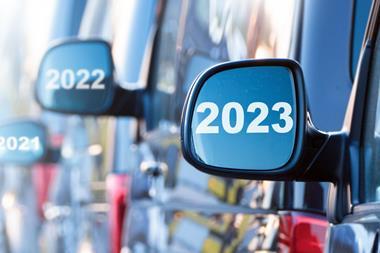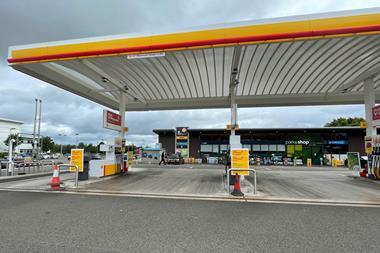Exorbitant credit card charges are at the centre of the toughest battle being faced by retailers in the US, according to Hank Armour, president and CEO of the National Association of Convenience stores, which represents the US convenience and petroleum retailing industry.
Appealing to retailer members to join the fight at last month’s NACS Show held in Las Vegas, Armour said at $5.4 billion, the industry’s retailers paid almost as much in credit card fees as they made in profits - "that’s outrageous", he said.
"So we are continuing to press forward with litigation to stop this anti-competitive practice."
Referred to in the US as ’interchange fees’, the charges are a percentage of each transaction that Visa and Mastercard banks from retailers every time a consumer uses a credit or debit card to pay for a purchase. In the US the fee averages 2% for credit card and signature debit transactions. That compares with 0.7% in the UK and about 0.55% in Australia.
A Senate investigation into credit card companies and what are regarded as their anti-competitive fee-setting practices is already underway, following pressure from organisations such as NACS, which last year filed a lawsuit accusing Visa, Mastercard and their member banks of price-fixing.
"We’re a long way from solving this problem, but we’ve made some concrete progress," said Armour, pointing out that interchange fees had not been increased recently, and the banks had announced they would soon be publicising their secret operating rules.
The fight over charges is set against a climate of declining fuel margins and increased competition in the US, as growing numbers of hypermarkets - supermarkets, discount retailers and warehouse clubs - enter the market to sell motor fuels. Their aim is to entice consumers with the one-stop shopping of gasoline and in-store items.
According to NACS data, hypermarkets comprise around 2-3% of the motor fuel retailing outlets, but capture 7.7% of total fuel sales.
Most of the hypermarkets selling fuels are supermarket chains (2.042 stores), followed by discount chains (1,044). However mass merchandisers/club chains (764) outsell all other hypermarket formats, averaging 445,000-plus gallons per store per month, well ahead of the 298,000 sold overall by hypermarkets and the 108,000 gallons at convenience stores.
The rate of hypermarket growth is significant in the grocery channel - of all new stores planned in 2004, 62% included fuelling, an increase from the 18% just one year earlier. By 2008, hypermarkets are expected to sell 12.6-15.4% of US motor fuels.
With competition for the fuel customer intensifying, consumers have become extremely price sensitive. A recent NACS consumer study found that 40% of consumers would switch where they normally shop for gasoline for a difference of as little as three cents a gallon.
In 2004 retail gross margins were at a 20-year low as a result of rising fuel prices and were eroded further the following year as a result of Hurricane Katrina which led to extreme price volatility, and even higher prices at the start of 2006.
The high prices led to a significant increase in fuel theft in the form of drive-offs - it has now become a quarter-billion dollar-a-year problem.
Meanwhile, the NACS Show featured a 380,000 sq ft exhibition of forecourt equipment and shop products in which interactive fuel pumps, foodservice and coffee, in particular, were heavily featured.
Workshop sessions focused on different aspects of the convenience and fuel retailing business, such as tobacco legislation, which is also adding to pain for convenience retailers who were urged to stay active in the political process.
Tom Briant, executive director of the National Association of Tobacco Outlets, said despite the challenges like declining consumption, higher taxes and restrictions on tobacco use, tobacco was flourishing in convenience stores, as gross profit and in-store sales were up for both cigarettes and other tobacco products (OTP).
"One way to profit from the tobacco category is to focus resources on OTP," he said. "Cigarettes have always taken centre stage, but product innovation and restrictions on smoking are driving more smokers toward OTP."
Despite all the problems, demand for convenience has never been stronger - a fact that presents both challenges and opportunities for convenience store retailers, according to Scott Hartman, in one of his final presentations as NACS chairman.
"Time is money, and time is really what we sell," he said. "But convenience is what virtually every other channel is now trying to replicate."
He believes the fresh and healthy image is key to today’s customer: "All over the globe, the fresh presentation is the first thing customers are seeing as they enter stores, especially in Europe."
Hartman also believes technology will play an ever-increasing role in c-stores - as it already is in Asia. "The cell phone you have today acts nothing like the ones they are using in Japan and Korea," he said.
"Customers will receive offers on their phones, redeem electronic coupons with their phones and web applications will allow them to find the lowest-priced products between them and their next destination - the in-car convenience store billboard is closer than you think.
"From the operating expertise that is evident in Asia, to the mastering of senses like food aroma and lighting at the retail level in France, to the sustained excellence of retailers in the US, I have seen new ways of doing business driven by changing consumer demands, and by technology."
The NACS Show 2007 will take place on November 6-9 at the Georgia World Congress Center in Atlanta, Georgia.
----
=== Market structure ===
The 140,600 convenience stores in the US posted $495.3 billion in total sales in 2005, with $344.2 billion in motor fuels sales - a more than four-fold increase from 10 years earlier.
Convenience stores sell the majority of gasoline purchased in the country - around three quarters of all fuel sold in the US in 2005. Around 112,000 (80%) sell motor fuels; 87% of new convenience stores have fuelling operations.
Motor fuels sales account for 69.5% of revenues in the convenience store industry, but because of low margins, only 39.9% of gross profit dollars.
Gross margins in 2005 were 16.3 cents per gallon, but after incorporating credit card fees of 2.5-3%, operating expenses, depreciation and taxes, this slumped to two cents.
Drive-offs cost the c-store industry $300m in 2005.
The average convenience store sold $3.08m worth of fuel in 2005, and 108,733 gallons per month.
New convenience stores in urban areas require an investment of $388,392 for motor fuel equipment and $47,520 for motor fuel inventory. For rural stores the figures are $289,387 and $40,594.





























No comments yet